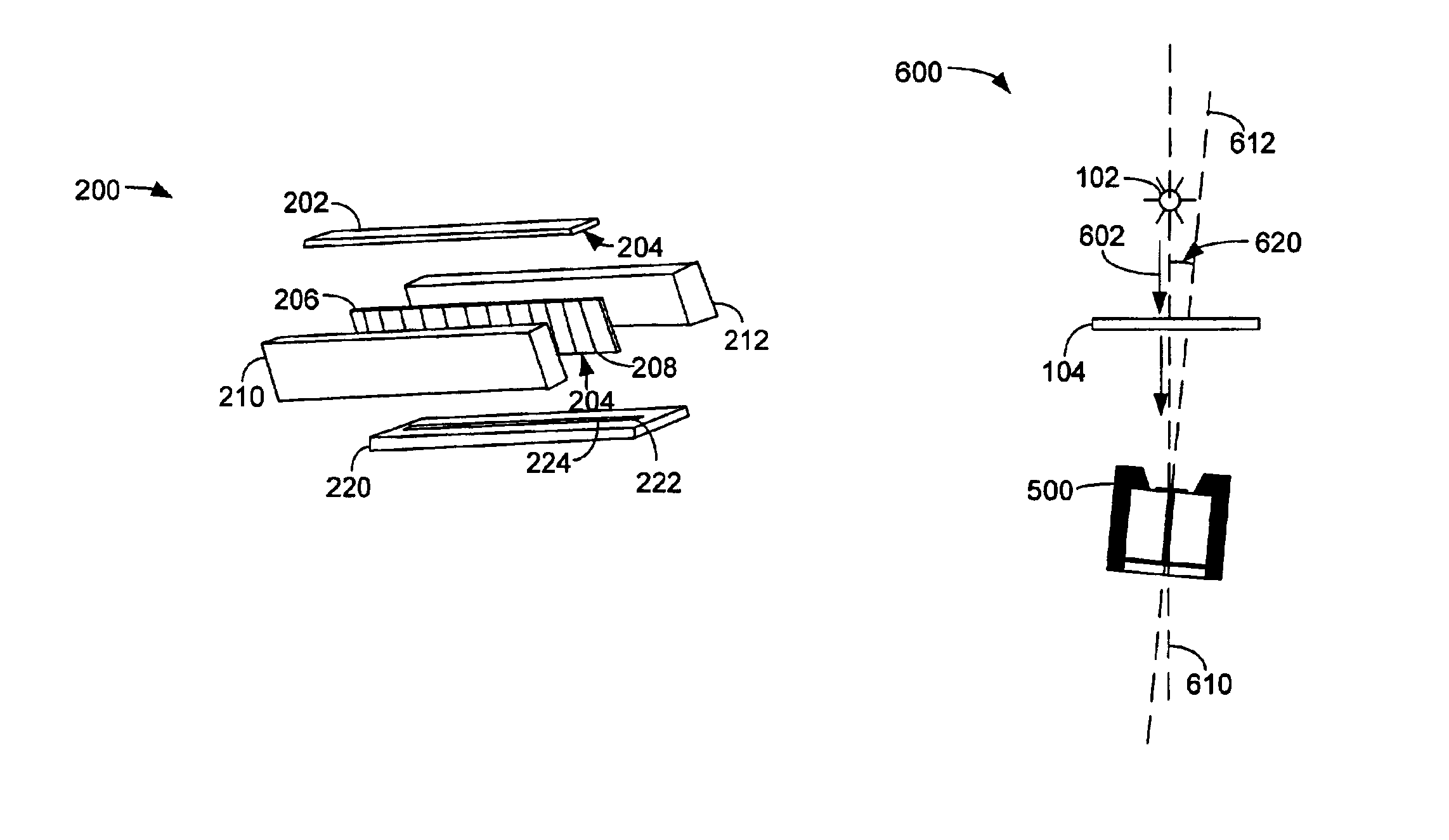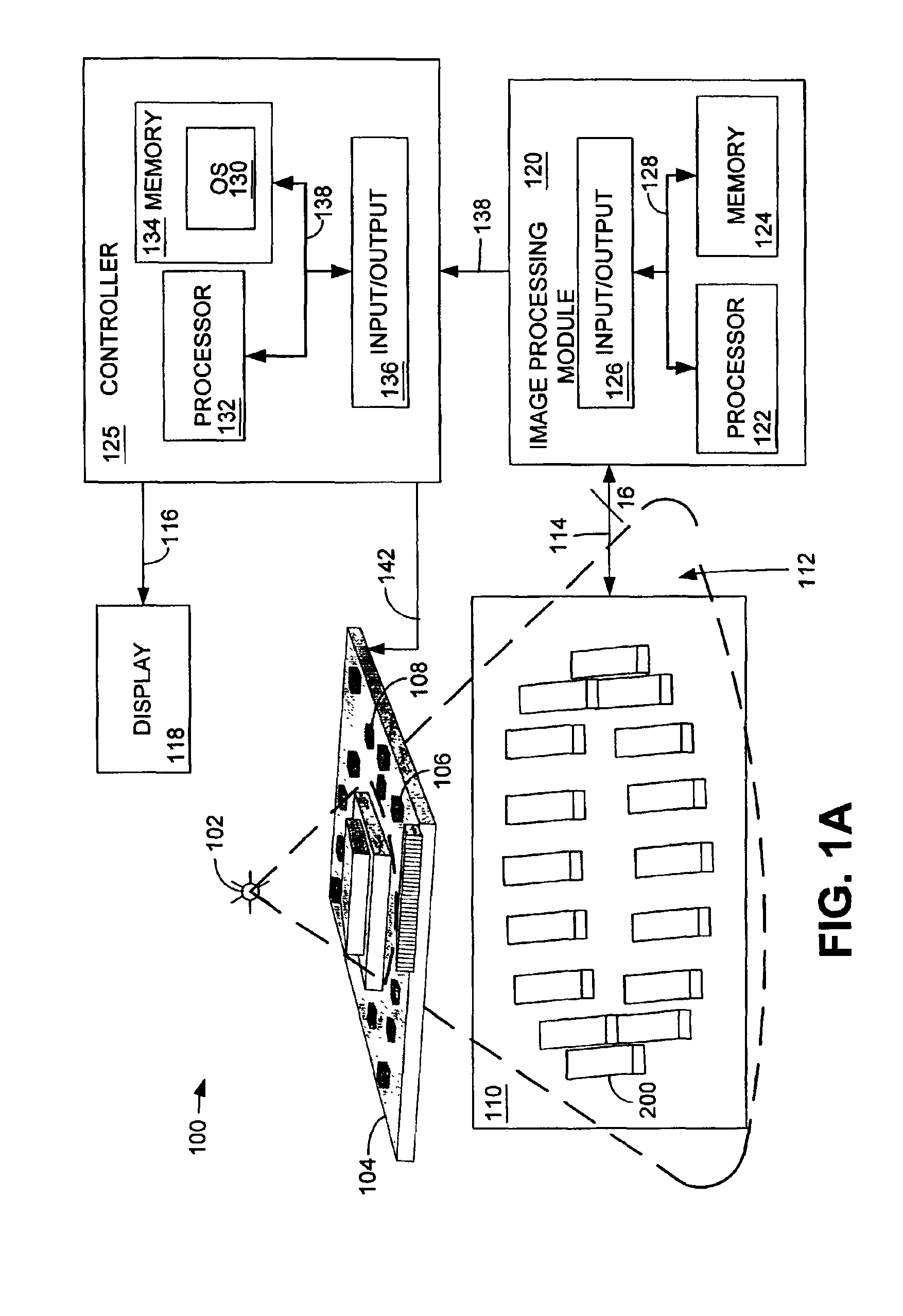Shielded x-ray detector
a shielded x-ray and detector technology, applied in the direction of material analysis using wave/particle radiation, instruments, radiation control devices, etc., can solve the problems of high cost associated with mechanically mounting and rotating the scintillator, one plane is in focus at any time, and the topology mapping is expensive, difficult and time-consuming
- Summary
- Abstract
- Description
- Claims
- Application Information
AI Technical Summary
Benefits of technology
Problems solved by technology
Method used
Image
Examples
embodiment 700
FIG. 7 is an alternative embodiment 700 of the x-ray detector 300 of FIG. 3A. The x-ray detector 700 includes a direct x-ray conversion element 702. The direct x-ray conversion element 702 converts x-ray energy into an electrical signal. The x-ray detector 700 also includes an array 706 of electrical conductors, an exemplary one of which is illustrated using reference numeral 708. Electrical conductor 708 can be, for example but not limited to, a metallic conductor, or any other structure for conducting an electrical signal from the direct x-ray conversion element 702. The x-ray detector 700 also includes a PCB 720 over which an array 722 of analog-to-digital (A-to-D) converters, an exemplary one of which is illustrated using reference numeral 724, is located.
The x-ray detector 700 includes portions 710 and 712 of a first attenuation material, which is similar to the first attenuation material described above with respect to FIG. 3A. In accordance with this embodiment of the inventi...
embodiment 800
FIG. 8 is an alternative embodiment 800 of the x-ray detector 500 of FIG. 5 The x-ray detector 800 includes a gap 806 instead of the optical fibers described above with respect to FIG. 5. The gap 806 defines one or more discrete optical channels (e.g., an optical waveguide) that transport the visible light indicated using reference numeral 805 from the scintillator 202 to each light sensitive element of the light sensing element 222. Each optical channel may contain, for example, air, an inert gas, or, as will be described with respect to FIG. 9, a liquid.
A reflective coating, such as, for example, gold or aluminum, or a combination thereof, is applied to the surfaces 810 and 815 of the portions 210 and 212 of the first attenuation material that border the gap 806 In this manner, the visible light 805 provided by the scintillator 202 is conducted through the gap 806 by bouncing off the reflective surfaces 810 and 815. However, the x-ray energy that passes through the scintillator 20...
embodiment 900
FIG. 9 is an alternative embodiment 900 of the x-ray detector 800 of FIG. 8. In FIG. 9, the gap 806 is filled with an optically conductive fluid 920, through which the visible light indicated using reference numeral 805 travels. In similar fashion to that described above with respect to FIG. 8, the x-ray energy indicated using reference numerals 502a, 502b and 502c is attenuated as described above.
PUM
 Login to View More
Login to View More Abstract
Description
Claims
Application Information
 Login to View More
Login to View More - R&D
- Intellectual Property
- Life Sciences
- Materials
- Tech Scout
- Unparalleled Data Quality
- Higher Quality Content
- 60% Fewer Hallucinations
Browse by: Latest US Patents, China's latest patents, Technical Efficacy Thesaurus, Application Domain, Technology Topic, Popular Technical Reports.
© 2025 PatSnap. All rights reserved.Legal|Privacy policy|Modern Slavery Act Transparency Statement|Sitemap|About US| Contact US: help@patsnap.com



